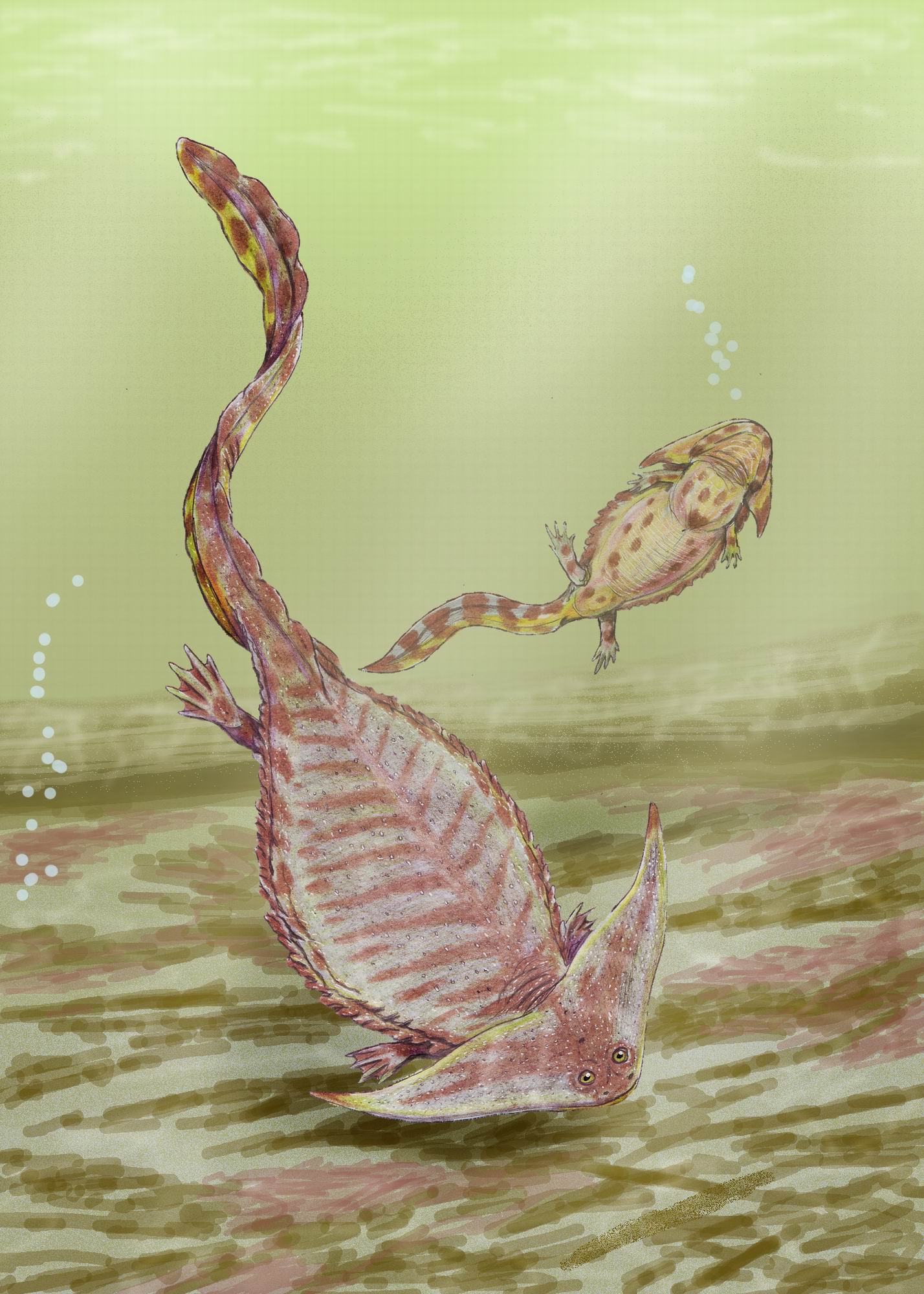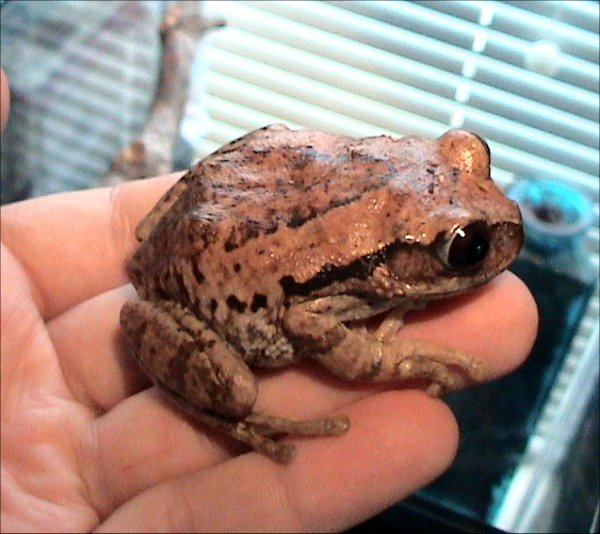|
Leptopelis Argenteus
''Leptopelis argenteus'', also known as the silvery tree frog or triad tree frog, is a species of frog in the family Arthroleptidae. It is found in coastal Kenya and Tanzania and south to northern Mozambique, southern Malawi, and eastern highlands of Zimbabwe. Taxonomy This species was species description, described by Georg Johann Pfeffer in 1893 based on a specimen collected south of Bagamoyo, Tanzania. Current accounts differ in its delimitation and distribution; the synonyms and distribution in this article follow the Amphibian Species of the World (ASW). However, the IUCN Species Survival Commission, IUCN SSC Amphibian Specialist Group (2016) only reports it from Tanzania, possibly extending into Mozambique. The AmphibiaWeb gives a distribution similar to that in ASW, but recognizes ''Leptopelis broadleyi'' as a valid species. Furthermore, ''Leptopelis concolor'' is perhaps subspecies of ''Leptopelis argenteus''. Description Depending on source, males measure in snout–ve ... [...More Info...] [...Related Items...] OR: [Wikipedia] [Google] [Baidu] |
Leptopelis Broadleyi
''Leptopelis broadleyi'' (Broadley's forest tree frog) is a species of frog in the family Arthroleptidae of uncertain status. The Amphibian Species of the World, the IUCN Species Survival Commission, IUCN SSC Amphibian Specialist Group, and the African Amphibians do not recognize it, but instead consider it Synonym (taxonomy), synonym with ''Leptopelis argenteus''. (ASW expresses some hesitation though.) However, the AmphibiaWeb recognizes it as a valid species. Distribution ''Leptopelis broadleyi'' is found in Malawi, Mozambique, and Zimbabwe. Habitat and conservation This species occurs in forest-savanna mosaic and along forested streams through savanna. ''Leptopelis broadleyi'' was assessed in 2004 by the International Union for Conservation of Nature (IUCN) as being of "Least Concern"; in the 2016 assessment, it was brought into synonymy with ''Leptopelis argenteus''. References {{DEFAULTSORT:Broadley's forest tree frog Leptopelis, broadleyi Frogs of Africa Amphibians ... [...More Info...] [...Related Items...] OR: [Wikipedia] [Google] [Baidu] |
Subspecies
In Taxonomy (biology), biological classification, subspecies (: subspecies) is a rank below species, used for populations that live in different areas and vary in size, shape, or other physical characteristics (Morphology (biology), morphology), but that can successfully interbreed. Not all species have subspecies, but for those that do there must be at least two. Subspecies is abbreviated as subsp. or ssp. and the singular and plural forms are the same ("the subspecies is" or "the subspecies are"). In zoology, under the International Code of Zoological Nomenclature, the subspecies is the only taxonomic rank below that of species that can receive a name. In botany and mycology, under the International Code of Nomenclature for algae, fungi, and plants, other infraspecific name, infraspecific ranks, such as variety (botany), variety, may be named. In bacteriology and virology, under standard International Code of Nomenclature of Prokaryotes, bacterial nomenclature and virus clas ... [...More Info...] [...Related Items...] OR: [Wikipedia] [Google] [Baidu] |
Amphibians Described In 1893
Amphibians are ectothermic, anamniotic, four-limbed vertebrate animals that constitute the class Amphibia. In its broadest sense, it is a paraphyletic group encompassing all tetrapods, but excluding the amniotes (tetrapods with an amniotic membrane, such as modern reptiles, birds and mammals). All extant (living) amphibians belong to the monophyletic subclass Lissamphibia, with three living orders: Anura (frogs and toads), Urodela (salamanders), and Gymnophiona (caecilians). Evolved to be mostly semiaquatic, amphibians have adapted to inhabit a wide variety of habitats, with most species living in freshwater, wetland or terrestrial ecosystems (such as riparian woodland, fossorial and even arboreal habitats). Their life cycle typically starts out as aquatic larvae with gills known as tadpoles, but some species have developed behavioural adaptations to bypass this. Young amphibians generally undergo metamorphosis from an aquatic larval form with gills to an air-breathing ad ... [...More Info...] [...Related Items...] OR: [Wikipedia] [Google] [Baidu] |
Amphibians Of Malawi
Amphibians are ectothermic, anamniote, anamniotic, tetrapod, four-limbed vertebrate animals that constitute the class (biology), class Amphibia. In its broadest sense, it is a paraphyletic group encompassing all Tetrapod, tetrapods, but excluding the amniotes (tetrapods with an amniotic membrane, such as modern reptiles, birds and mammals). All extant taxon, extant (living) amphibians belong to the monophyletic subclass (biology), subclass Lissamphibia, with three living order (biology), orders: Anura (frogs and toads), Urodela (salamanders), and Gymnophiona (caecilians). Evolved to be mostly semiaquatic, amphibians have adapted to inhabit a wide variety of habitats, with most species living in freshwater ecosystem, freshwater, wetland or terrestrial ecosystems (such as riparian woodland, fossorial and even arboreal habitats). Their biological life cycle, life cycle typically starts out as aquatic animal, aquatic larvae with gills known as tadpoles, but some species have devel ... [...More Info...] [...Related Items...] OR: [Wikipedia] [Google] [Baidu] |
Amphibians Of Kenya
Amphibians are ectothermic, anamniotic, four-limbed vertebrate animals that constitute the class Amphibia. In its broadest sense, it is a paraphyletic group encompassing all tetrapods, but excluding the amniotes (tetrapods with an amniotic membrane, such as modern reptiles, birds and mammals). All extant (living) amphibians belong to the monophyletic subclass Lissamphibia, with three living orders: Anura (frogs and toads), Urodela (salamanders), and Gymnophiona (caecilians). Evolved to be mostly semiaquatic, amphibians have adapted to inhabit a wide variety of habitats, with most species living in freshwater, wetland or terrestrial ecosystems (such as riparian woodland, fossorial and even arboreal habitats). Their life cycle typically starts out as aquatic larvae with gills known as tadpoles, but some species have developed behavioural adaptations to bypass this. Young amphibians generally undergo metamorphosis from an aquatic larval form with gills to an air-breathing ... [...More Info...] [...Related Items...] OR: [Wikipedia] [Google] [Baidu] |
Frogs Of Africa
The fauna of Africa are all the animals living in Africa and its surrounding seas and islands. The more characteristic African fauna are found in the Afro-tropical realm. Lying almost entirely within the tropics, and stretching equally north and south of the equator creates favorable conditions for variety and abundance of wildlife. Africa is home to many of the world's most recognizable fauna such as lions‚ rhinoceroses‚ cheetahs‚ giraffes‚ antelope, hippopotamuses, leopards, zebras‚ and elephants, among many others. Origins and history of African fauna Whereas the earliest traces of life in fossil record of Africa date back to the earliest times, the formation of African fauna as we know it today, began with the splitting up of the Gondwana supercontinent in the mid-Mesozoic era. After that, four to six faunal assemblages, the so-called African Faunal Strata (AFSs) can be distinguished. The isolation of Africa was broken intermittently by discontinuous "filter routes" ... [...More Info...] [...Related Items...] OR: [Wikipedia] [Google] [Baidu] |
Leptopelis
''Leptopelis'' is a genus of frogs in the family Arthroleptidae. They are found throughout Sub-Saharan Africa Sub-Saharan Africa is the area and regions of the continent of Africa that lie south of the Sahara. These include Central Africa, East Africa, Southern Africa, and West Africa. Geopolitically, in addition to the list of sovereign states and ..., excluding Madagascar. It is placed in Monotypic taxon, monotypic subfamily Leptopelinae, although this subfamily is not always recognized. They have a number of common names, including forest treefrogs, tree frogs, leaf-frogs, and big-eyed frogs. Description ''Leptopelis'' are mostly medium-sized frogs (snout–vent length ), but ''Leptopelis palmatus'' can reach . Tympanum (anatomy), Tympanum is present. Most species have expended digit tips. Ecology ''Leptopelis'' are mainly Arboreal locomotion, arboreal, but some species, especially in more arid areas, are terrestrial or even subfossorial. Breeding typically starts wi ... [...More Info...] [...Related Items...] OR: [Wikipedia] [Google] [Baidu] |
Savanna
A savanna or savannah is a mixed woodland-grassland (i.e. grassy woodland) biome and ecosystem characterised by the trees being sufficiently widely spaced so that the canopy does not close. The open canopy allows sufficient light to reach the ground to support an unbroken herbaceous layer consisting primarily of grasses. Four savanna forms exist; ''savanna woodland'' where trees and shrubs form a light canopy, ''tree savanna'' with scattered trees and shrubs, ''shrub savanna'' with distributed shrubs, and ''grass savanna'' where trees and shrubs are mostly nonexistent.Smith, Jeremy M.B.. "savanna". Encyclopedia Britannica, 5 Sep. 2016, https://www.britannica.com/science/savanna/Environment. Accessed 17 September 2022. Savannas maintain an open canopy despite a high tree density. It is often believed that savannas feature widely spaced, scattered trees. However, in many savannas, tree densities are higher and trees are more regularly spaced than in forests.Manoel Cláudio da ... [...More Info...] [...Related Items...] OR: [Wikipedia] [Google] [Baidu] |
Canthus (herpetology)
In snakes and amphibians, the canthus, canthal ridge or ''canthus rostralis''Spawls S, Branch B. 1995. ''The Dangerous Snakes of Africa''. Ralph Curtis Books. Dubai: Oriental Press. 192 pp. . is the angle between the flat crown of the head and the side of the head between the eye and the snout,Mallow D, Ludwig D, Nilson G. 2003. ''True Vipers: Natural History and Toxinology of Old World Vipers''. Krieger Publishing Company, Malabar, Florida. . or more specifically, between the supraocular scale and the rostral scale. It is defined as a sharp ridge in many viperids, but is rounded in most rattlesnakes Rattlesnakes are venomous snakes that form the genera '' Crotalus'' and ''Sistrurus'' of the subfamily Crotalinae (the pit vipers). All rattlesnakes are vipers. Rattlesnakes are predators that live in a wide array of habitats, hunting small an ..., for example.Campbell JA, Lamar WW. 2004. The Venomous Reptiles of the Western Hemisphere. Comstock Publishing Associates, Ithaca and Lo ... [...More Info...] [...Related Items...] OR: [Wikipedia] [Google] [Baidu] |





